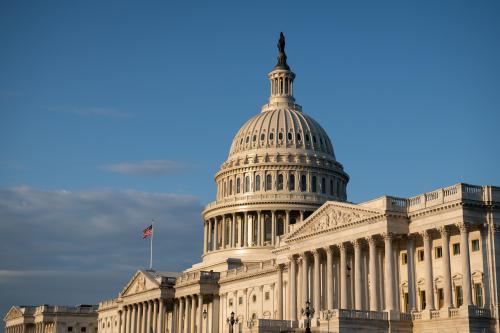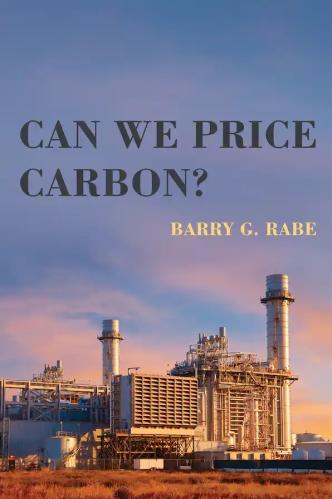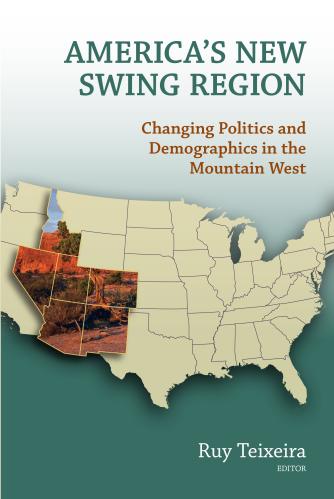The nation now confronts a new political reality whereby the Democratic Party retained its advantage in the House, took control of the executive branch, and gained the narrowest edge in the Senate. In an era of hyper-partisanship and a context where fossil fuels are widely produced, used and defended politically, is a legislative path on climate change possible? Or is unilateral executive action, despite all of its vulnerability to litigative or political reversal, the primary option?
As the federal government navigates this transition, a pair of states offer some potential lessons. Both Virginia and Colorado underwent comparable political transitions during the last two years. This included securing razor-thin Democratic leads in their senates following closely-fought elections alongside control of the lower chambers and the governors’ offices. Both states have long-standing histories of promoting extensive fossil fuel production and use through accommodating policies. And yet, despite the near-total absence of Republican support, they found ways to make major legislative advances on climate.
In both instances, Democratic governors tailored policies that made environmental, economic and political sense for their jurisdictions. They framed them by focusing on emerging climate impacts facing their state and emphasizing multiple benefits from early action that included improved air quality and economic opportunities linked to supporting development of cleaner technologies. And they remained on course despite near-unanimous opposition from the minority party, passing key statutes within six months of electoral transitions.
In Virginia, Governor Ralph Northam weathered numerous political controversies (unrelated to environmental policy) and kept climate prominent on his agenda during his first two years in office while legislation stalled in the face of Republican opposition. He rejected proposals to test the full extent of his executive powers and instead made climate a major issue in mid-term 2019 elections, flipping the Senate and gaining a two-vote majority. Northam then worked closely with legislative Democrats to devise a complementary pair of statutes that will accelerate the Commonwealth’s transition from fossil fuels in its electricity sector, although he failed to secure support from Republican legislators.
Virginia’s new legislation includes a clean energy standard that steadily moves the state toward full reliance on non-carbon electricity sources. This approach has been increasingly pursued elsewhere, generally in cases where Democrats hold larger majorities and fossil fuel production and use are far less dominant. But unlike many other climate-engaged states, Virginia did not stop there.
Instead, it adopted a complementary carbon price involving cap-and-trade auctions, as the state joined the 10-state Regional Greenhouse Gas Initiative through separate legislation. Northam prepared administratively for this step during earlier stages of his governorship, sealing the deal when he won a narrow legislative victory last summer.
Virginia now enters an auction process that will operate under a steadily shrinking regional emissions cap, generating an estimated one billion dollars during the balance of this decade. Two main funds were created to invest the bulk of these revenues. One focuses on coastal preparedness and adaptation, which has emerged as a growing concern along the state’s vast coastal areas. Another provides energy efficiency assistance for low-income citizens, a major concern from an environmental justice standpoint.
While Virginia demonstrated that it is politically feasible to blend regulatory and market policies for carbon rather than rely on just one approach, Colorado doubled down on a long-vexing climate and air quality problem: methane emissions from its extensive oil and gas production. Methane is a particularly potent greenhouse gas, with far greater climate impact than carbon during its first century in the atmosphere. It is also a major contributor to significant air quality problems in portions of states like Colorado.
Under former Governor (now Senator) John Hickenlooper, Colorado began in the mid-2010s to take some important executive actions to address leaks and expand inspections amid massive oil and gas output increases, while most other production states were dawdling. But Democratic successor Jared Polis decided to go considerably farther, emboldened by a 2018 election win that shifted senate control to his party by a single seat.
Polis ultimately signed a series of climate-related bills in 2019, including provisions to drive down methane releases that go well beyond all other states and nearly all energy-producing nations. This includes new provisions to effectively ban most forms of methane flaring and venting into the atmosphere while expanding use of state-of-the-art technology for continuous emissions monitoring.
Colorado is also tightening bonding requirements to assure funds for long-term management of wells once they no longer produce energy while pursuing a mill levy increase to assure proper staffing and technology to operate its new regulatory system. Legislation also reinvented the mission and structure of the state’s oil and gas regulatory commission, placing central emphasis on public health rather than its historic focus on facilitating rapid resource development. Local authorities received much-expanded opportunity to decide major zoning and related land-use issues linked to drilling.
As in Virginia, this legislation and related bills passed almost exclusively along party lines. They position Colorado to take a series of steps unique among American production states, at the very moment major importers of American natural gas are increasingly raising concerns about our dismal methane record as they consider additional purchases.
Both Virginia and Colorado indicate that it is possible for diverse Democrats in a single state to remain unified on more than symbolic climate policy legislation, including instances when the upper chamber margin remains very slender. Translating lessons from statehouses to the federal level remains very challenging, however, given the far greater difficulties of sustaining intra-party coalitions across states from diverse regions in the challenging institutional context of the U.S. Congress. Indeed, every significant Congressional step on environmental policy in recent decades, including 2016 chemical safety legislation and last December’s historic agreement to phase-out climate-damaging hydrofluorocarbons, has required both strong Democratic unity and an ability to garner at least some Republican votes.
Nonetheless, these two state cases indicate that it may be possible to begin to take steps on climate change that are not reliant solely on the unilateral powers of elected executives. In both instances, states with strong historic dependence on fossil fuel production and use and very modest prior climate policy records have adopted consequential legislation that includes such essential policy options as carbon pricing, clean electricity standards, and minimization of methane flaring and venting.









Commentary
Climate politics: What congressional Democrats can learn from state legislatures
January 27, 2021